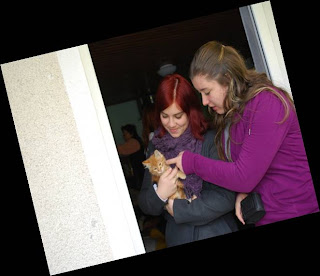Intervju with Mayor of municipality Žetale, Mr. Anton Butolen. Where will ecological islands be placed?
Where will ecological islands be placed?
There will be 14 location in the whole of municipality as close to the people as possible.
When will they be made?
They will be made until the end of October.
Who will remove the rubbish?
A company called Čisto mesto (Clean City).
Who will finance this?
The ecological islands will be financed by the municipality; the value of this investment will be 18.000 € , of which 4.000 € were won by tender.
Where have we disposed of waste until now?
Until now, we have disposed of waste in a common container.
Are there many illegal waste dumps?
There aren't any big ones since cleaning actions are organized every year.
What do you do with illegal waste dump?
If the person responsible for it is found, he has to organize the clean.
Do you look for the people responsible for illegal dimps?
By law this is the responsibility of the owner of the land.
What happens with other waste (cars, hazardous materials, bulky waste etc.)?
The removal of hazardous materials and bulky waste is organized once a year. The last collection of old cars was carried out in 2004.
Do citizens have any other rights?
Yes, they can transport the garbage to the collection centre Ptuj and without being charged.
The mayor was interviewed by Petra Bračević
 removal of kitchenoil
removal of kitchenoil
 "eco rubish island"
"eco rubish island"
 other rubish
other rubish
 metal
metal
 plastic
plastic
.jpg)
.jpg)
.jpg)
.jpg)
.jpg)
.jpg)
.jpg)
.jpg)
.jpg)
.jpg) On Wednesday, 10th March, in the context of learning Geography, pupils of 7th class produced model of eruption ( Vulcano). First, we did frame of eruption. We used only newspaper. We have beautiful structure made of plaster which Toni provide it. When the plaster dried, we painted it in the colour of eruption. Then we have put in the mixture of vinegar, baking powder and red chalk (this triggered a reaction mixture, which was held almost as than it really is). The work was very fun. If you have a plaster, try to do it also.
BE CAREFUL AT WORK, YOU CAN MAKE VERY DIRTY YOUR SURROUNDINGS !!!!!!!!!!
girls of 7th Class
On Wednesday, 10th March, in the context of learning Geography, pupils of 7th class produced model of eruption ( Vulcano). First, we did frame of eruption. We used only newspaper. We have beautiful structure made of plaster which Toni provide it. When the plaster dried, we painted it in the colour of eruption. Then we have put in the mixture of vinegar, baking powder and red chalk (this triggered a reaction mixture, which was held almost as than it really is). The work was very fun. If you have a plaster, try to do it also.
BE CAREFUL AT WORK, YOU CAN MAKE VERY DIRTY YOUR SURROUNDINGS !!!!!!!!!!
girls of 7th Class












 metal
metal












